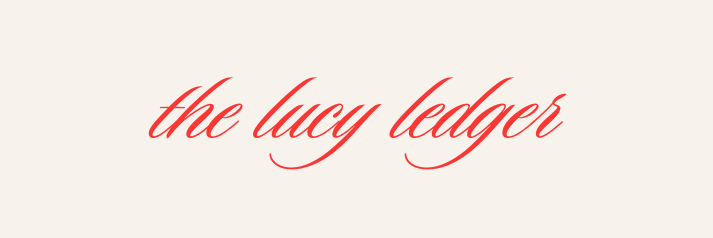3 Telltale Signs of Gentrification—and How to Spot the Right Time to Invest in Up-and-Coming Neighborhoods
Ever drive through a neighborhood and think:
“Wait, wasn’t this area kind of sketchy a few years ago?”
Then you check Zillow and—BOOM—home prices have doubled, there’s a Pilates studio on every corner, and you're officially too late.
That’s gentrification.
And if you’re trying to build wealth through real estate, learning how to spot early signs of gentrification is one of the most powerful strategies in the game.
Let’s break it all down—what gentrification really means, how to recognize the signs, and why investing in pre-gentrification areas can seriously grow your money.
What Is Gentrification, Really?
Gentrification happens when lower-income neighborhoods begin to attract more affluent residents, often leading to rising property values, new businesses, and neighborhood revitalization. It’s not always smooth—there’s plenty of debate around displacement and affordability—but from an investor lens, it signals opportunity.
Why it matters to you:
Getting in before the major transformation happens means lower purchase prices, stronger appreciation, and long-term rental demand—especially if you’re investing for cash flow.
3 Clear Signs a Neighborhood Is Gentrifying
These are the early signals that a community is in the middle of a transformation—before the prices explode.
Fresh Concrete & Manicured Lawns
One of the most overlooked—but powerful—signs of gentrification is new concrete.
When you start seeing contractors replacing cracked sidewalks, pouring fresh driveways, or adding decorative curbs, it’s a strong signal that a neighborhood is beginning to shift.
Why this matters for investors:
In lower-income neighborhoods (C or C+ class areas), things like new pavement or sidewalks typically don’t increase rental income or resale value. They’re purely cosmetic—not cash-flow boosting. That’s exactly why investors usually skip it unless required by the city.
But homeowners? They’re all in.
And that’s the key.
Fresh concrete is often a homeowner-driven upgrade—a visual cue that people are betting on the neighborhood’s future. They're investing in curb appeal, not because it guarantees returns today, but because they believe their property values will rise tomorrow.
When you see blocks with new sidewalks, driveway redos, and tidy landscaping, you're likely witnessing a transition into B- or even B-class territory. It shows pride of ownership, rising confidence, and a shift in who’s moving in.
In short: New concrete = new energy.
And new energy = rising demand.
If you're scouting for up-and-coming areas to invest in, don’t just look at comps—look at the sidewalks.
It’s one of the clearest physical signs a neighborhood is heating up.
2. Trendy Businesses Start Moving In
You know the scene: A formerly quiet corner suddenly has a dog bakery, a coworking space, and a cold brew café that charges $7 a cup.
What to look for:
Boutique coffee shops, wine bars, or craft breweries
Yoga studios and pilates pop-ups
Natural grocery stores (think: Trader Joe’s, Sprouts)
Local art galleries or Instagrammable restaurants
Why this matters:
These businesses cater to a younger, more affluent demographic. Their presence is a sign that higher-income residents are moving in—or developers think they will soon.
Pro Tip: Check Google Maps and Yelp in areas you’re considering investing in. Look for shifts in reviews, new businesses, and upgrades in photos.
3. Real Estate Activity is Increasing - But Still Affordable
This is the sweet spot for investors: homes are selling faster, flippers are renovating, and rents are rising—but the area is still relatively affordable compared to surrounding neighborhoods.
What to look for:
Flipped homes popping up with higher price tags
New construction or multi-family rehabs
Price-per-square-foot increasing but still below city average
Shorter Days on Market (DOM) compared to 12–18 months ago
Why this matters:
Once prices start creeping up—but haven’t spiked—it’s your chance to get in before the crowd. Appreciation + rental demand = long-term profit.
Pro Tip: Use sites like Redfin or Zillow to track price trends. You can also use Rentometer to compare rent growth year-over-year.
Why Investing Before Gentrification Pays Off
Investing in a neighborhood after it’s been fully transformed usually means you’re paying top dollar. But getting in early can lead to:
Lower entry prices – more room for equity growth
Faster appreciation – as the neighborhood improves, your property value rises
Higher cash flow – rental demand grows with new jobs, transit, and amenities
Stronger negotiating power – fewer buyers means better deals for you
And here’s the real kicker: you don’t have to be local to invest in these markets.
You can build wealth from anywhere—laptop, phone, and a plan.
Final Thoughts: Start Watching, Then Start Moving
The best investors aren’t just following trends—they’re spotting them early.
If you're a busy mom, full-time professional, or new to investing, understanding these signs of gentrification gives you a major advantage. You don’t need to guess—you just need to be observant, do a little research, and trust the data.
Want help picking the right market? Grab my guide: The Five Step Guide to Out-of-State Real Estate Investing
It’s simple, actionable, and built for women who are ready to make moves (but don’t have hours to waste).



